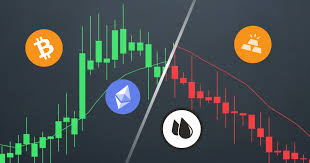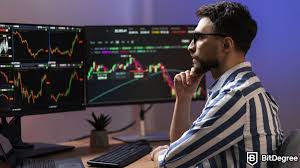
The Future of Finance: Exploring Live Trading Crypto
In the fast-paced world of finance, one of the most exciting developments is the rise of cryptocurrencies and their trading. Live trading crypto has emerged as a popular avenue for investors looking to capitalize on this digital revolution. With the increasing adoption of cryptocurrencies, live trading platforms have become vital tools for both seasoned traders and newcomers alike. For those interested in understanding the market dynamics, strategies, and resources needed to succeed, it’s essential to navigate the landscape with the right information. For an example of a trading profile, you can check out live trading crypto https://site.financialmodelingprep.com/profile/ACEV. Through this exploration, we will delve into various aspects of live trading crypto.
The Basics of Live Trading Crypto
Live trading crypto involves buying and selling cryptocurrencies in real-time on various trading platforms. Unlike traditional stock trading, where trades may occur over hours or days, crypto trading can happen instantly, allowing for rapid decision-making and execution.
To engage effectively in live trading, one needs to understand several fundamental concepts, including market orders, limit orders, stop-loss orders, and the overall trading interface. These concepts help traders determine when to enter and exit positions while managing risk effectively.
Choosing the Right Platform
One of the first steps in live trading crypto is selecting an appropriate trading platform. Each platform offers unique features, supported cryptocurrencies, and trading fees. Popular platforms include Binance, Coinbase, Kraken, and Bitfinex, each providing a variety of tools geared towards different trading strategies.
When choosing a platform, consider factors such as user experience, available cryptocurrencies, security features, and customer support. Additionally, ensure that the platform complies with the necessary regulatory requirements in your region to avoid legal complications.
Understanding Market Analysis
Successful live trading relies on a solid understanding of market analysis. Traders typically utilize two main types of analysis: fundamental analysis and technical analysis.
Fundamental Analysis

Fundamental analysis involves evaluating the intrinsic value of a cryptocurrency based on various factors, including its technology, team, market demand, and overall economic conditions. For example, the launch of new features, partnerships, or regulatory news can significantly impact a cryptocurrency’s value.
Technical Analysis
Technical analysis, on the other hand, focuses on past price movements and trading volumes to predict future price behavior. Traders use various tools such as moving averages, support and resistance levels, and candlestick patterns to identify trends and make informed trading decisions.
Risk Management in Live Trading
Risk management is crucial in live trading crypto. The volatility of cryptocurrencies means prices can change rapidly, leading to potential losses. Traders often employ strategies such as diversification, position sizing, and setting stop-loss orders to protect their investments.
It’s essential to only invest what you can afford to lose. Many traders also recommend allocating a small percentage of your overall portfolio to high-risk assets, which includes cryptocurrencies, to mitigate potential losses.
Strategies for Live Trading Crypto
There are several strategies that traders use when engaging in live trading crypto, each suited to different trading styles and goals.
Day Trading
Day trading involves making multiple trades within a single day, aiming to capitalize on short-term price movements. Day traders typically rely on technical analysis to make quick decisions and close trades before the end of the day to avoid overnight risk.
Swing Trading

Swing trading is a medium-term strategy where traders hold positions for several days or weeks, aiming to benefit from price swings. This approach requires a more profound analytical understanding and patience compared to day trading.
Scalping
Scalping is a high-frequency trading strategy where traders aim to make small profits from a large number of trades throughout the day. This approach requires a robust trading platform and an exceptional ability to make quick decisions.
The Role of Bots in Live Trading
With the rapid pace of live trading crypto, many traders are turning to automated trading bots to enhance their strategies. These bots can execute trades based on predefined parameters, allowing traders to take advantage of market opportunities 24/7.
However, while bots can significantly streamline trading processes, it’s crucial to understand their limitations and ensure that they are configured correctly to avoid substantial losses.
The Future of Live Trading Crypto
As the cryptocurrency market continues to grow, the landscape of live trading crypto is likely to evolve. Innovations such as artificial intelligence, machine learning, and decentralized finance (DeFi) are set to redefine how trading occurs in the crypto space.
Traders will need to stay informed about these developments, adapting their strategies and tools accordingly to remain competitive in an ever-changing environment.
Conclusion
Live trading crypto presents a unique opportunity for investors to engage with one of the most dynamic financial markets in history. Understanding the fundamentals of trading, market analysis, and risk management are critical components for success in this arena. As technology continues to innovate, the potential for profit and growth in the crypto trading space will likely expand, creating new opportunities for traders willing to adapt and grow. Whether you are a newcomer or an experienced trader, taking the time to learn and strategize can help you navigate the exhilarating yet unpredictable world of live trading crypto.
